Tracking Journal, Dec 30, 2020
I went back to the spot along the river trail where I encountered the Opossum (Didelphis viriginiana) trail a few weeks ago hoping that I may find the sign of something or someone out in the newly fallen snow. It snowed last night between 3am and 5:30am, with enough snowfall to cover old tracks but leave the shape of wider heavily used trails. I could make out a few Eastern Cottontail (Sylvilagus floridanus) tracks which were probably left around 5am or so based on how much snow had filled them in, but not much else besides a lone Dog walker and their Dog.
Sit spot
I sat for about 10 minutes when I got to the edge of the river, just to take it in and get my awareness up. It’s always a good thing for me to take that time, even if it’s only a couple of minutes to just acclimatize my mind to the world around me. I thought to the river before me and remembered different birds I have seen midwinter. I remembered the Opossum trail and how where it led me. I also was on the look out for a Mink (Neovison vison) just in case one might appear. Minks have been spotted just down the river from this spot, and up the river from this spot, but I don’t remember seeing one right here where the river gets wider, the water shallower, and the bottom mostly muddy silt. Maybe all these factors play into the absence of Mink sightings?
There weren’t many tracks yet in the new snow, so I ended up paying more attention to the plant life around. There was lots of Buckthorn (Rhamnus cathartica), Manitoba Maple (Acer negundo), and Silver Maples (Acer saccharinum) to navigate through but between them I was encountering Red-Osier Dogwood (Cornus sericea), Elderberry (Sambucus canadensis) and a few others.

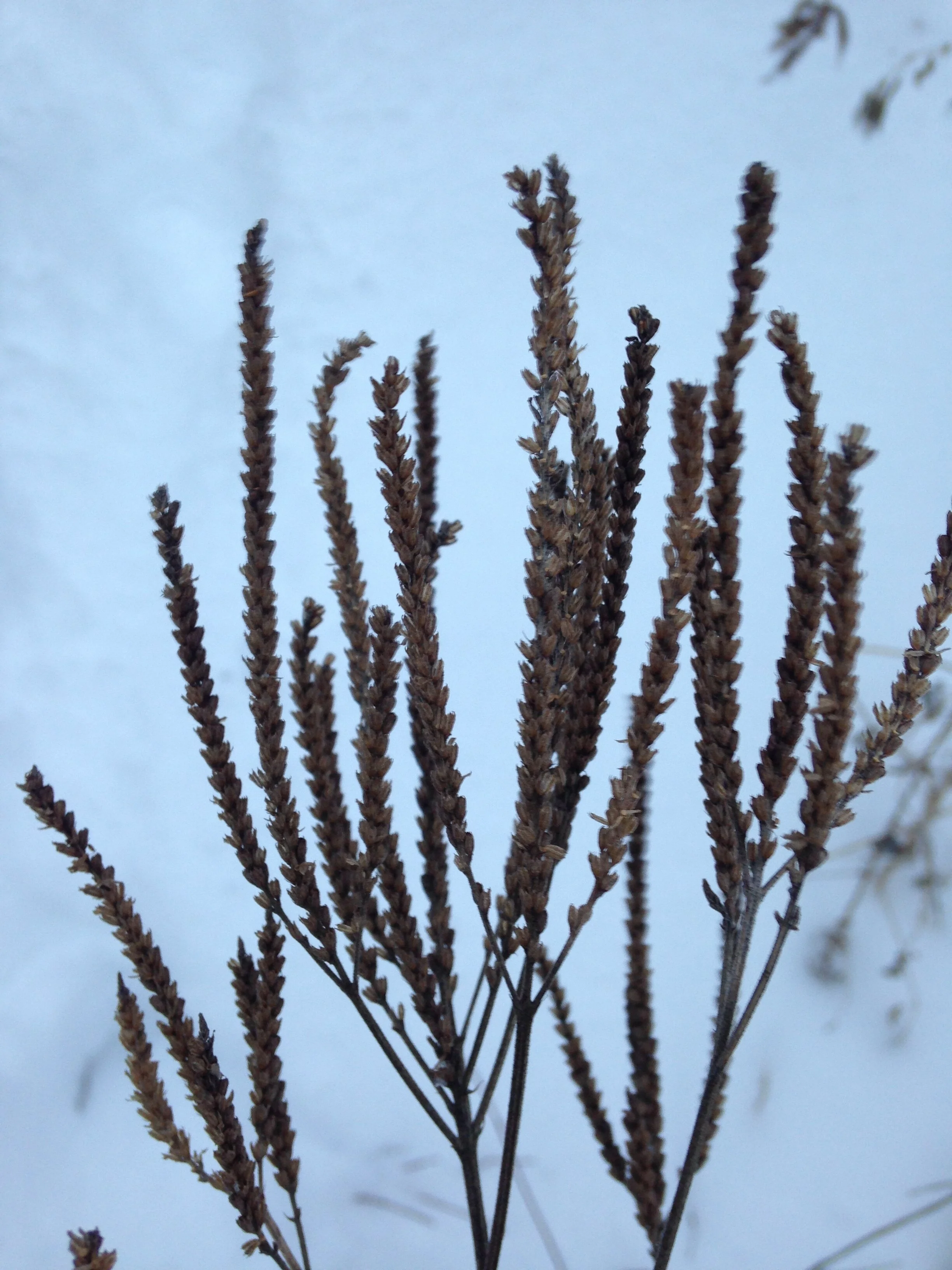
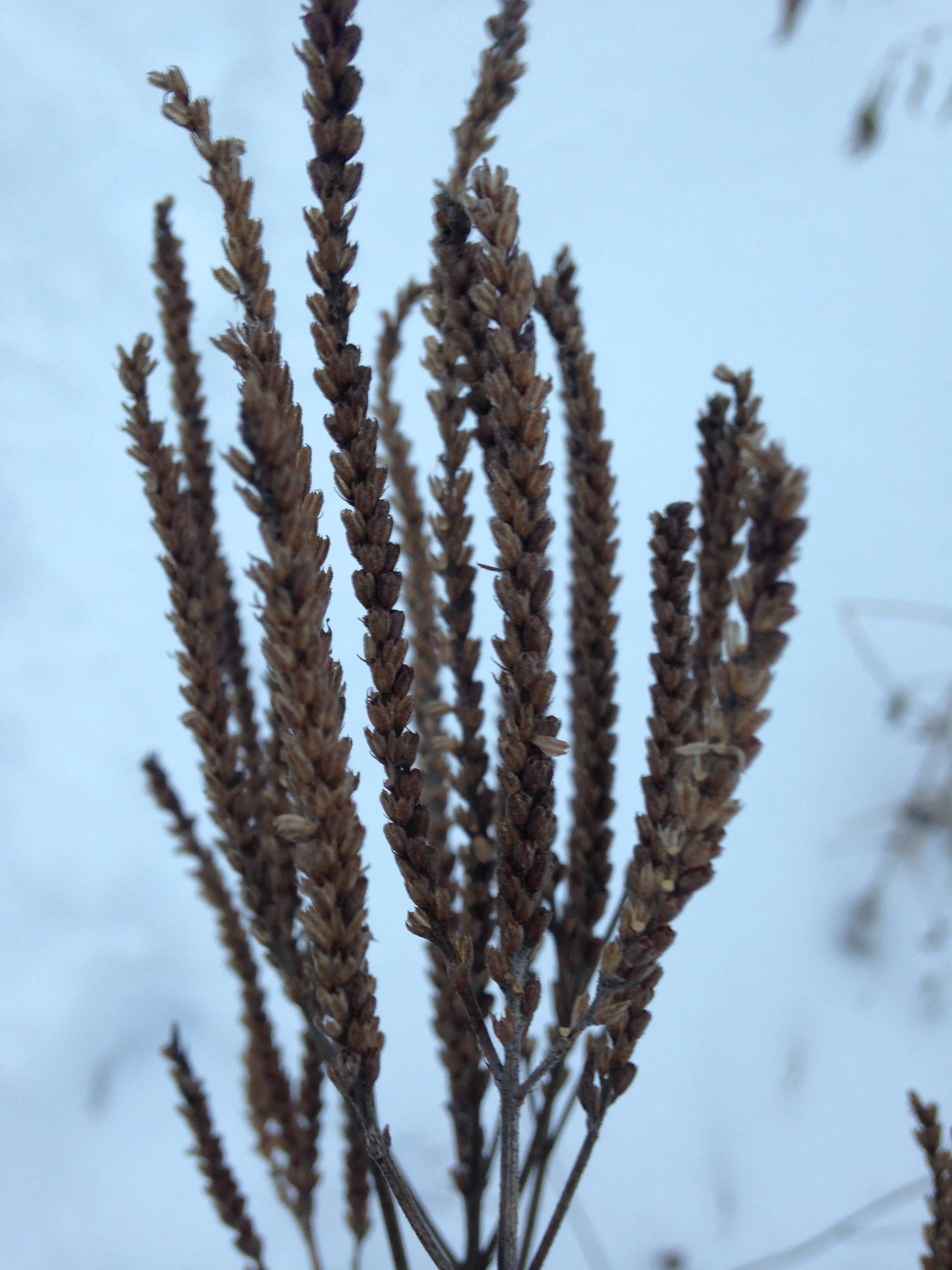

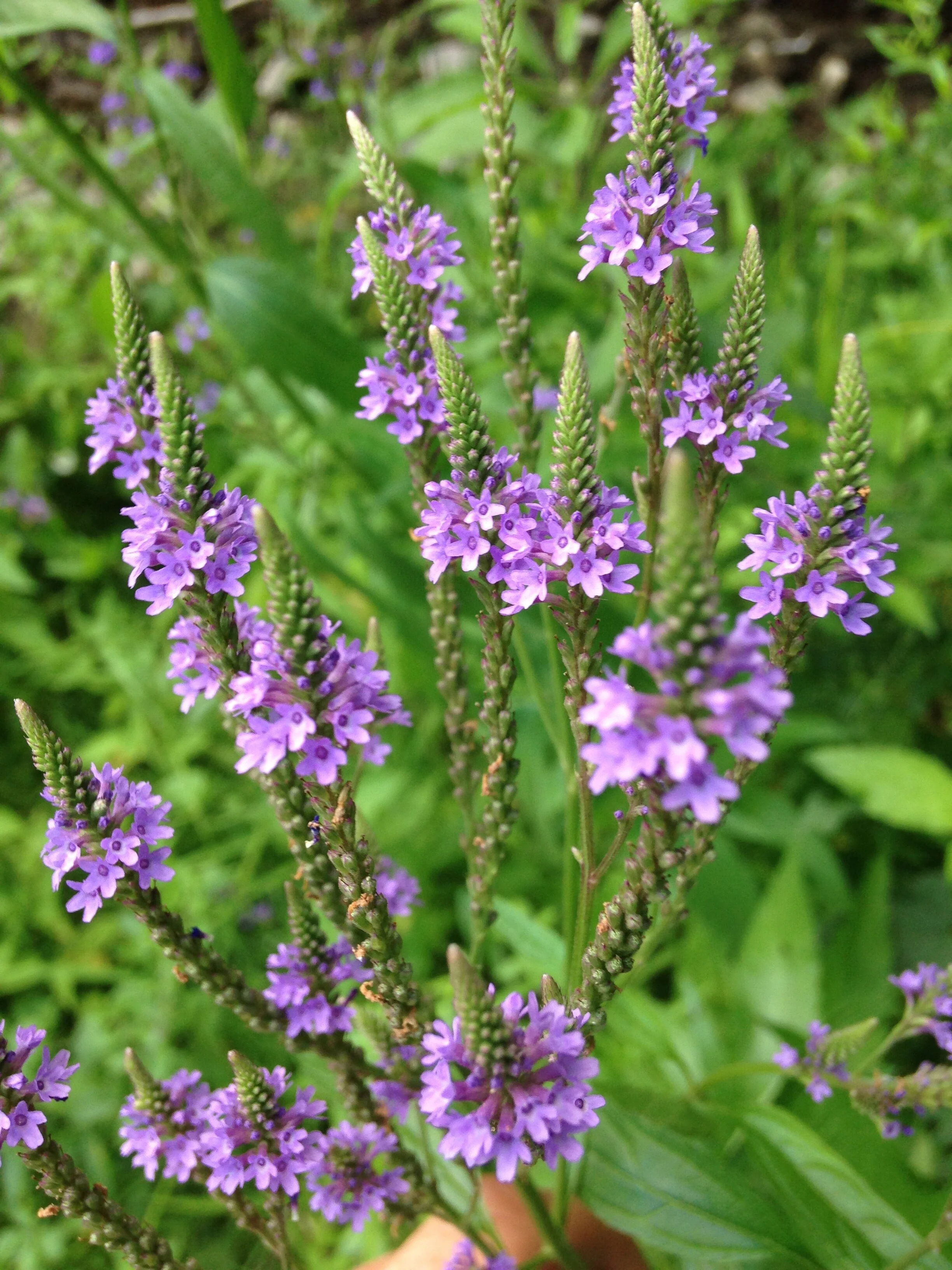
Along the edge of the river there were a few stands of Blue Vervain (Verbena hastata), one of the most beautiful summer flowers I my neck of the woods. I wondered if I break up the top if there would still be seeds to spread everywhere? I tried and it looked like I was successful as a peppery dusting appeared on the snow. But since getting home, and breaking up the heads and viewing them through a small microscope, I couldn’t find any seeds. My assumption is that the seeds are thrown in the mid-Autumn? I have read in John Eastman’s “The Book of Swamp and Bog” that Swamp Sparrows, Northern Cardinals (Cardinalis cardinalis), Dark-Eyed Juncos (Junco hyemalis), Song Sparrows (Melospiza melodia) and White-Crowned Sparrows (Zonotrichia leucophrys) all consume the seeds, and that Cottontails eat the plant to some extant.
As I continued ducking through the riparian growth I came across a Willow (Salix sp.) growing in a messy tangle on the bank, but below the tree I saw an opening in the snow, and some tracks leading away from the hole. When I got closer I found urine and scat and noticed a 2x2 lope along the river leading right up to this spot. It was a Mink trail!!

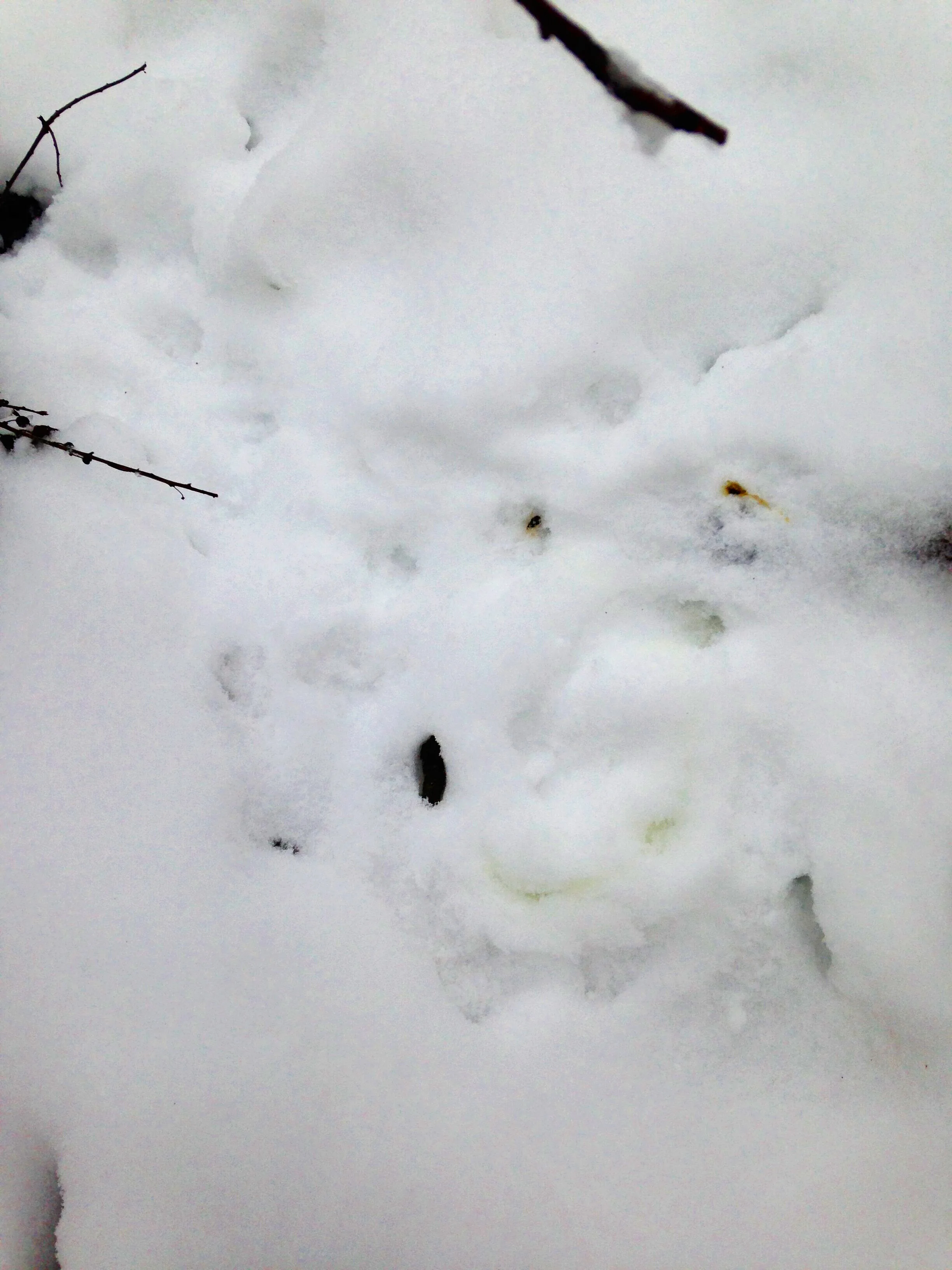

I was impressed to find all this action in one spot, the hole, the urine and the scat. I wonder what they were after down the hole? Recently I had tracked a Mink just a ways upstream from the spot where I was at, where I found a bit of blood and a Crayfish (Orconectes virilis likely) leg. The Minks do eat Crayfish, but on closer look, and smell, the scat didn’t smell much like Crayfish.


It isn’t that common that I find Mink scat, even if I trail the Mink for a while. I have seen twisted scat, long and narrow, tapering at the ends, but this was certainly different. This one was much wetter, and though I didn’t see any clearly, it felt like there was hair in the mass, like when you pull hair from a drain. Measurements I took were: 4.5 cm L x 1 cm D. Luckily I am getting over my insistence that scat should always look the same for the same animal but instead remembering that all butts are different, and all diets are shifting and changing based on what is accessible regionally and seasonally. I could have pulled this scat apart with some sticks nearby but I didn’t. Best to remember next time.
I decided to keep on the Mink trail along the river, but instead of following the Mink where I had just come from, I decided to backtrack them. I took a moment to access and re-access the direction of travel (something I sometimes struggle with, especially in deeper snow) and found some great tracks that helped see a little better.
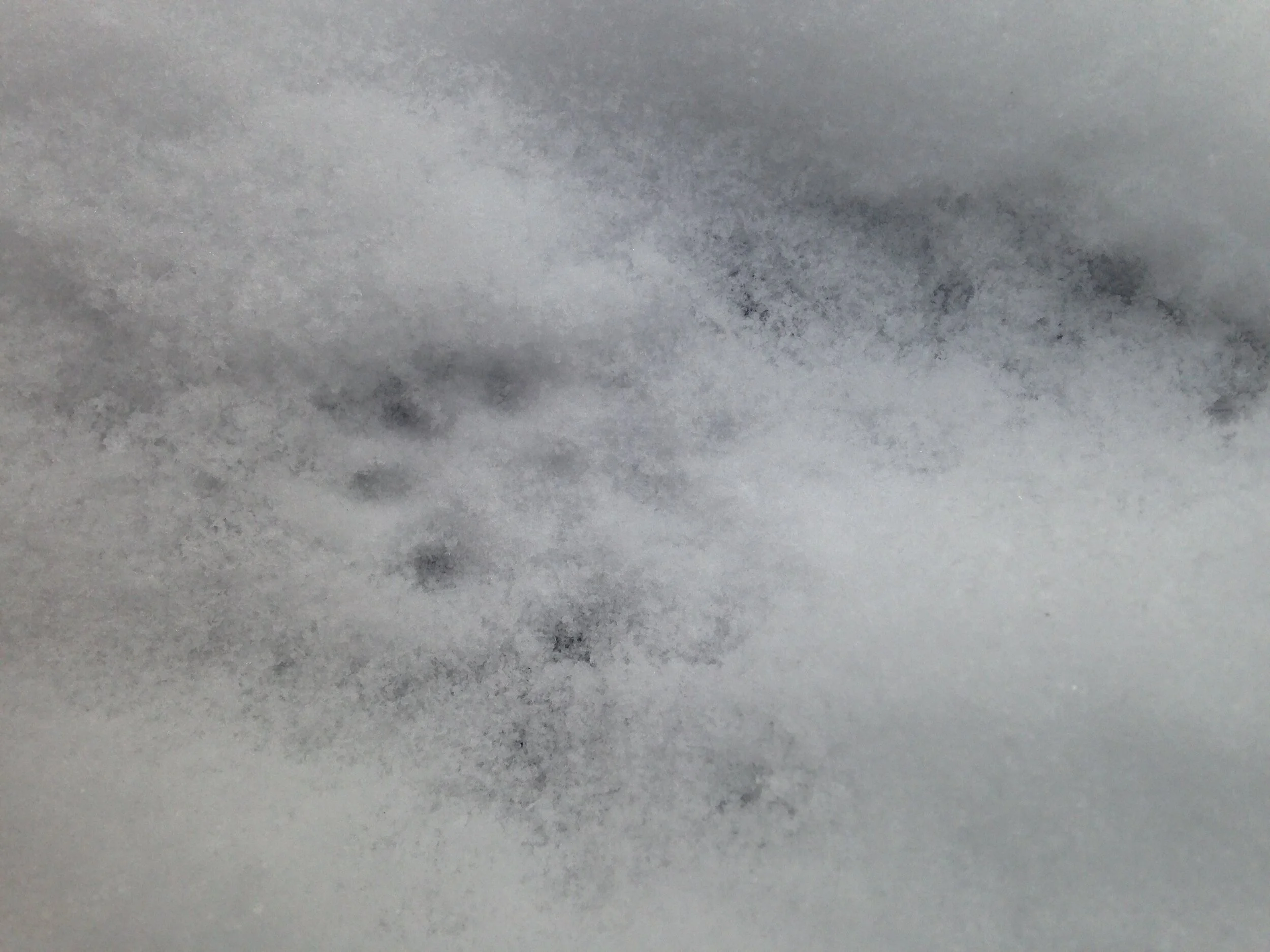
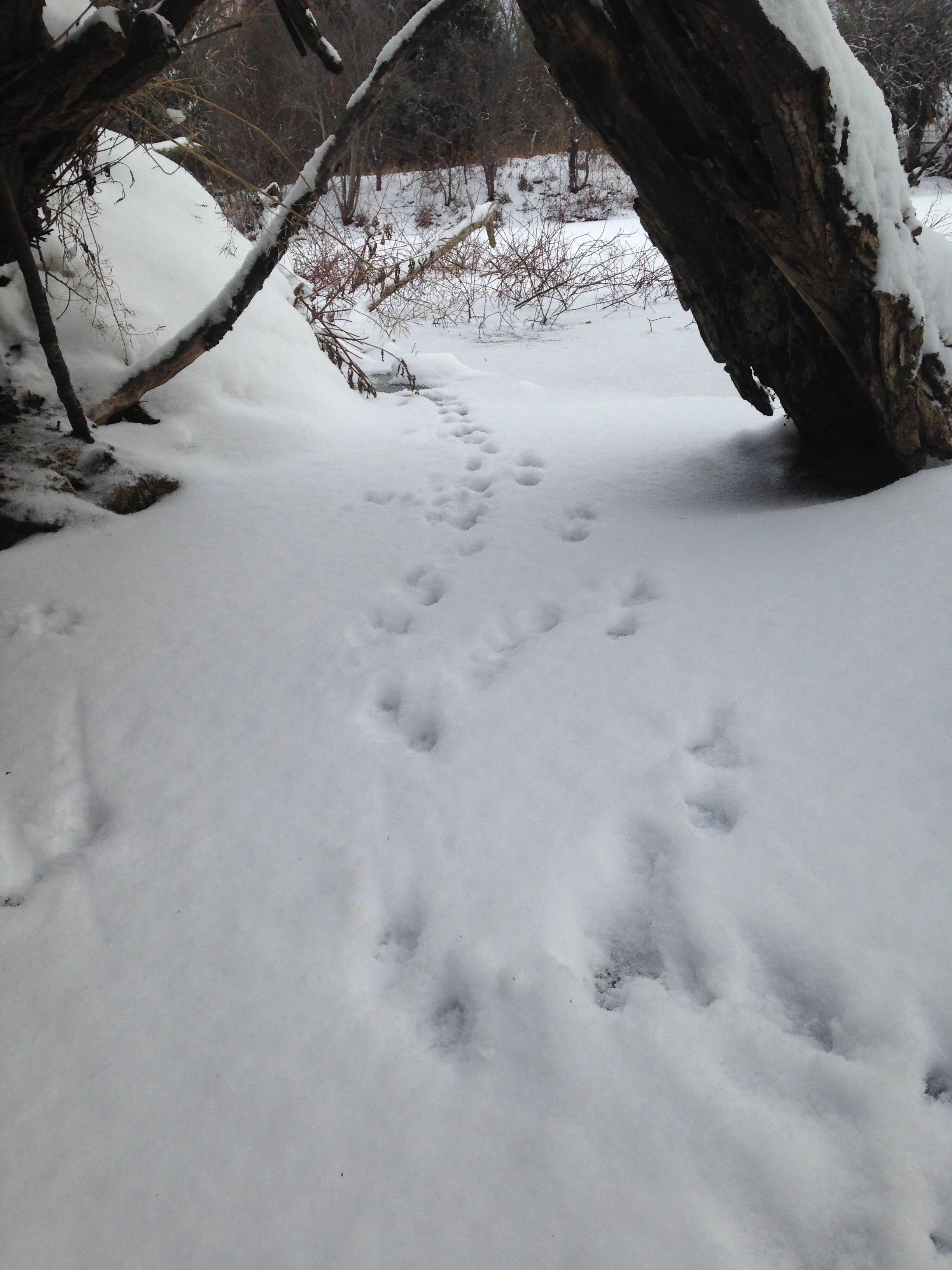
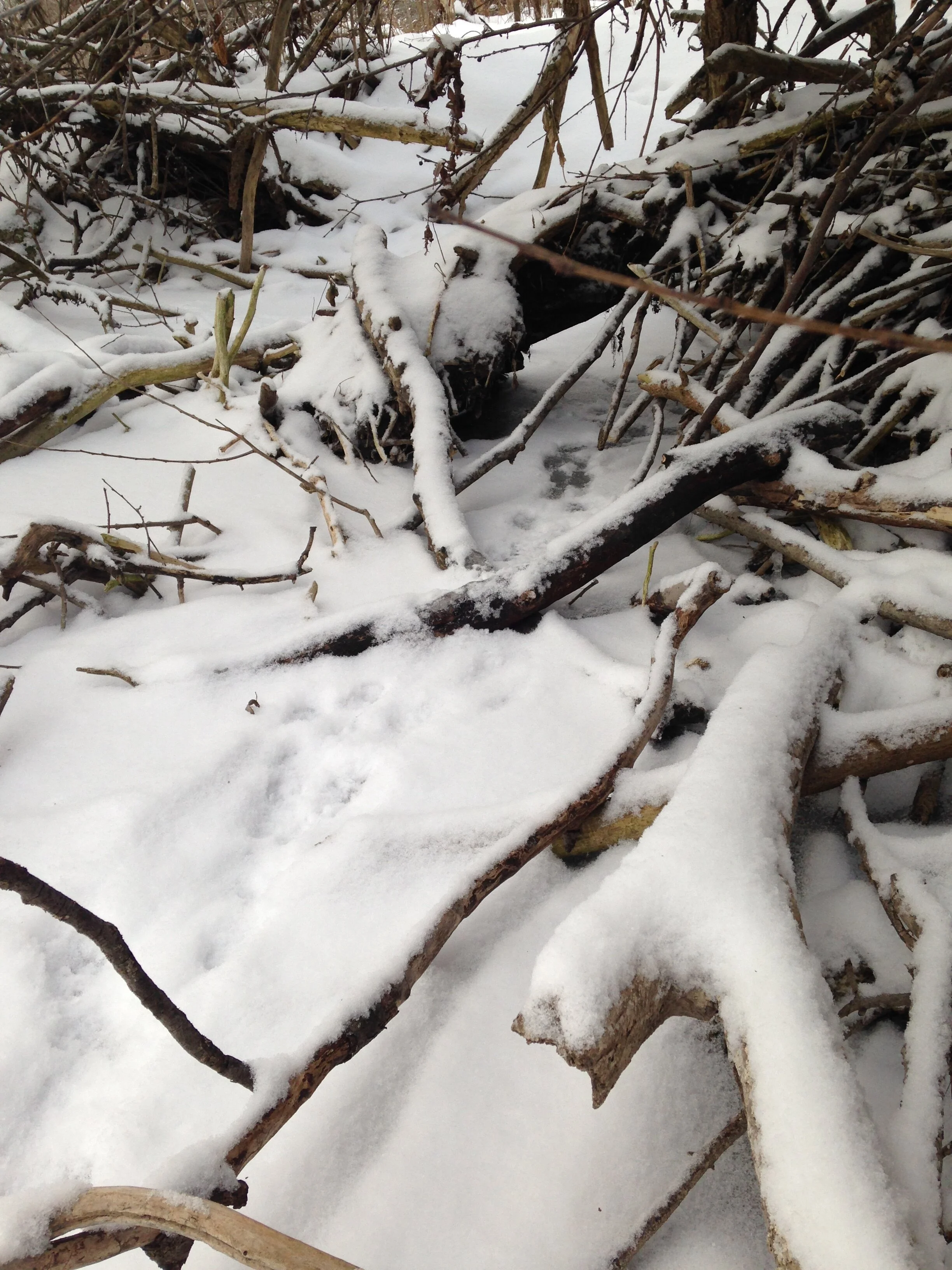
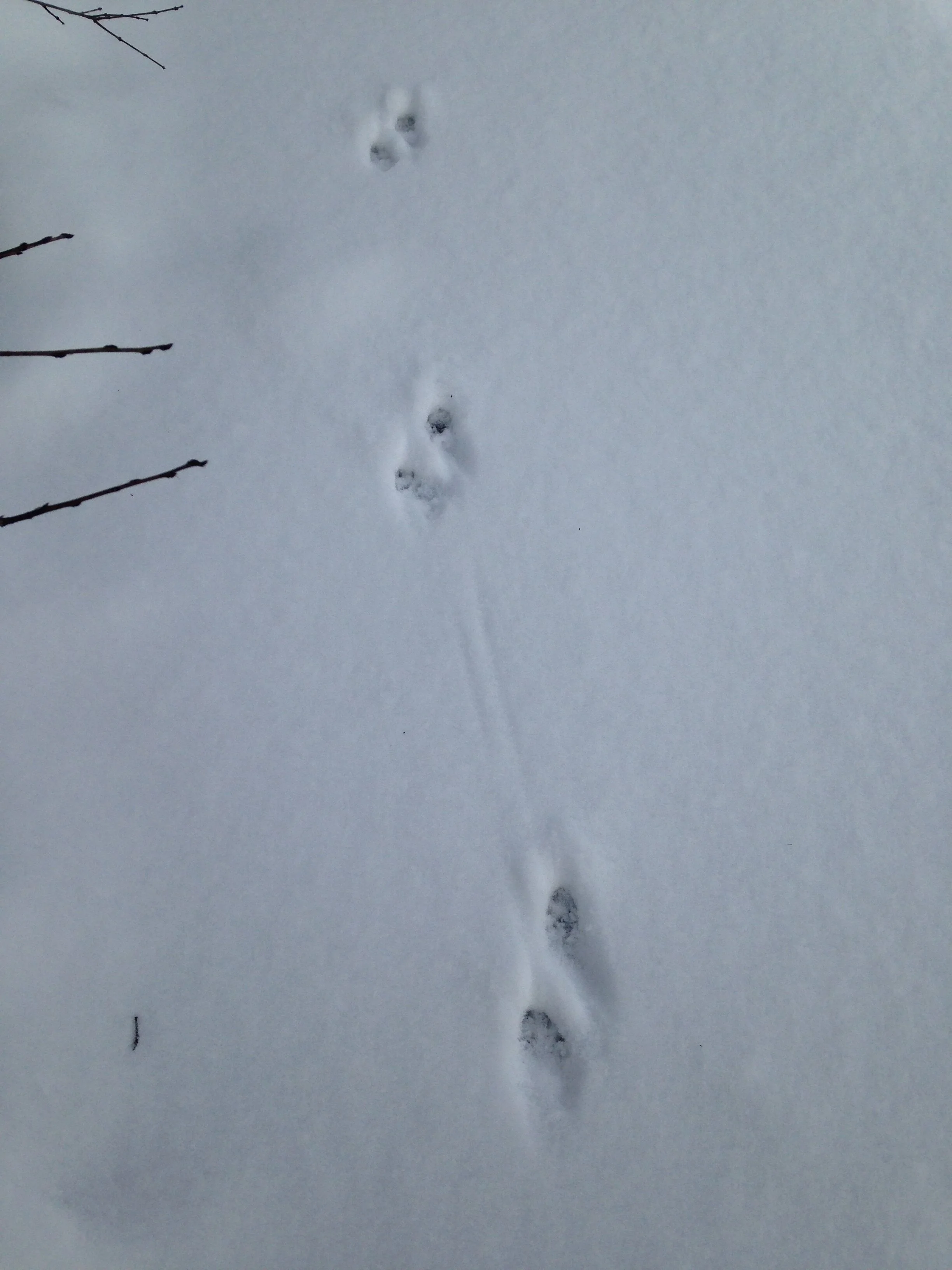
The trail width was about 6.8 cm, and this was fairly consistent, though not always. What was not consistent was the stride length, or the gait. The stride length between the two groups of tracks closest to the camera in the fourth photo in the gallery above was 58 cm. This was an average looking stride for the 2x2 lope, but you can see the transition between the 2x2 (closest to the camera) and the 3x4 (second group) away from the camera. It got me wondering at what compels the Mink to change their gait? How much of a choice is it? Do they ever just tumble over their feet?
Overall there seemed to be a small correlation between gait (3x4 vs 2x2 lopes) and stride length. The shortest strides were 2x2’s but 2x2’s were also up in the higher numbers, though not the longest ones. My guess is that the Mink stretches a little bit further and lands in the 3x4 because there is more momentum? This may be more of a wonder. Another question this brings up is if 3x4’s are a result of a faster gait is the trail width thinner as faster gaits usually mean thinner trail widths? Something to look for next time.
Attempt at panoramic shot to get a fuller view of trail.
I ended up turning back towards the main trail around here, stopping to check out the Joe-Pye Weed (Eutrochium purpureum) and the Privet (Ligustrum vulgare) on the way home.
I am always glad to get out early before a lot of folks are on the trail, or before the snow melts away, or in the case today, gets rained on. But coming back into my neighbourhood there are always new tracks to see compared to when I first left the house. I found this wonderful domestic Dog track set against the tread of a car wheel and I had to take a photo. Maybe I’ll see more of this doggo on the block.



